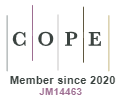Análise da gestão logística e dos relacionamentos entre frigorífico e fornecedor do gado de corte
DOI:
https://doi.org/10.5585/exactaep.2021.13236Palavras-chave:
Gestão logística, Cadeia produtiva de bovino de corte, Processo de integração.Resumo
Diante da importância da gestão logística nos tempos atuais, bem como a integração entre todos os participantes desta, torna-se vital as organizações buscarem aperfeiçoamento nessa temática. Desse modo, o presente estudo fora desenvolvido em um frigorífico localizado na região noroeste do estado do Rio Grande do Sul com o objetivo de investigar a integração entre frigorífico e fornecedor, além de realizar uma análise da gestão logística, identificando os gargalos existentes e apresentando sugestões de melhorias. O trabalho se desenvolveu através de uma pesquisa bibliográfica, seguida por uma coleta de dados a campo, onde se realizaram entrevistas junto aos pesquisados e, por fim, realizou-se o tratamento dos dados através do software Microsoft Excel. Diante desses resultados realizou-se uma análise de toda a gestão da cadeia logística da carne bovina, auxiliando na verificação de pontos críticos e na existência de possíveis sugestões de melhorias.
Downloads
Referências
Brasil. Decreto nº 30.691, de 29 de março de 1952. Aprova o novo regulamento da Inspeção Industrial e Sanitária de Produtos de Origem Animal. Diário Oficial. Brasília, DF. 29 mar. 1952. Disponível em: <https://www.planalto.gov.br/ccivil_03/decreto/1950-1969/D30691.htm>. Acesso em: 17 out. 2016.
Ambrose, E., Marshall, D., & Lynch, D. (2010). Buyer supplier perspectives on supply chain relationships. International Journal of Operations & Production Management, 30(12), 1269-1290. https://doi.org/10.1108/01443571011094262.
Bonamigo, A., & Rodriguez, C. M. T. (2017). The concept Hoshin Kanri applied in supply chain management. Journal of Lean Systems, 2(3), 107-118.
Bowersox, Donald J, et al. (2014) Gestão Logística da Cadeia de Suprimentos. 4. ed. Porto Alegre: Bookman.
Charlebois, S., & Haratifar, S. (2015). The perceived value of dairy product traceability in modern society: An exploratory study. Journal of dairy science, 98(5), 3514-3525. https://doi.org/10.3168/jds.2014-9247.
Charlier, C., & Valceschini, E. (2008). Coordination for traceability in the food chain. A critical appraisal of European regulation. European Journal of Law and Economics, 25(1), 1-15. https://doi.org/10.1007/s10657-007-9038-2.
Chuah, P., Peng Wong, W., Ramayah, T., & Jantan, M. (2010). Organizational context, supplier management practices and supplier performance: A case study of a multinational company in Malaysia. Journal of Enterprise Information Management, 23(6), 724-758. https://doi.org/10.1108/17410391011088619.
Chulayo, A. Y., & Muchenje, V. (2015). A balanced perspective on animal welfare for improved meat and meat products. South African Journal of Animal Science, 45(5), 452-469. http://dx.doi.org/10.4314/sajas.v45i5.2.
Corrêa, H. L. (2014). Administração de cadeias de suprimento e logística. Editora Atlas SA.
COUNCIL OF SUPPLY CHAIN MANAGEMENT PROFESSIONALS. CSCMP Supply Chain Management. 2013. Extraído em 12 de setembro de 2019, de http://www.clm1.org/aboutus/supply-chain-management-definitions.
Cousineau, M., Lauer, T. W., & Peacock, E. (2004). Supplier source integration in a large manufacturing company. Supply chain management: an international journal, 9(1), 110-117. https://doi.org/10.1108/13598540410517629.
Diskin, M. G., & Kenny, D. A. (2016). Managing the reproductive performance of beef cows. Theriogenology, 86(1), 379-387. https://doi.org/10.1016/j.theriogenology.2016.04.052.
Dzwolak, W. (2016). Practical aspects of traceability in small food businesses with implemented food safety management systems. Journal of food safety, 36(2), 203-213. https://doi.org/10.1111/jfs.12232.
Folinas, D., Manikas, I., & Manos, B. (2006). Traceability data management for food chains. British Food Journal, 108(8), 622-633. https://doi.org/10.1108/00070700610682319.
FOOD AND AGRICULTURE ORGANIZATION OF THE UNITED NATIONS (FAO). FAO’s role in livestock and the environment. FAO, 2017. Disponível em: <http://www.fao.org/livestock-environment/en/>. Acessado em: 23 dez de 2017.
FORMIGONI, Ivan. Qual é o consumo da carne bovina no pais? FarmNews. 2017. Disponivel em: <http://www.farmnews.com.br/pesquisa-e-desenvolvimento/consumo-de-carne-bovina-4/>. Acessado em: 27 dez de 2017.
Groves, G., & Valsamakis, V. (1998). Supplier-customer relationships and company performance. The International Journal of Logistics Management, 9(2), 51-64. https://doi.org/10.1108/09574099810805834.
Holweg, M. (2005). An investigation into supplier responsiveness: Empirical evidence from the automotive Industry. The International Journal of Logistics Management, 16(1), 96-119. https://doi.org/10.1108/09574090510617376.
Jordan, G., Thomasius, R., Schröder, H., Wulf, J. S., Schlüter, O., Sumpf, B., & Schwägele, F. (2009). Non-invasive mobile monitoring of meat quality. Journal für Verbraucherschutz und Lebensmittelsicherheit, 4(1), 7-14. https://doi.org/10.1007/s00003-009-0389-1.
Knoll, S., Marques, C. S. S., Liu, J., Zhong, F., Padula, A. D., & Jardim Barcellos, J. O. (2017). The Sino-Brazilian beef supply chain: mapping and risk detection. British Food Journal, 119(1), 164-180. https://doi.org/10.1108/BFJ-07-2016-0346.
Maldonado‐Siman, E. M. A. Godinez‐Gonzalez, C. S., Cadena‐Meneses, J. A., Ruíz‐Flores, Agustín., & Aranda‐Osorio, Gilberto (2013). Traceability in the mexican dairy processing industry. Journal of Food Processing and Preservation, 37(5), 399-404. https://doi.org/10.1111/j.1745-4549.2011.00663.x.
Menozzi, D., Halawany-Darson, R., Mora, C., & Giraud, G. (2015). Motives towards traceable food choice: A comparison between French and Italian consumers. Food Control, 49, 40-48. https://doi.org/10.1016/j.foodcont.2013.09.006.
Micheli, G. J. (2008). A decision-maker-centred supplier selection approach for critical supplies. Management Decision, 46(6), 918-932. https://doi.org/10.1108/00251740810882671.
Miranda-De La Lama, G. C. et al. (2010). Critical points in the pre-slaughter logistic chain of lambs in Spain that may compromise the animal's welfare. Small Ruminant Research, 90(1), 174-178. https://doi.org/10.1016/j.smallrumres.2010.02.011.
Miranda-De La Lama, G. C., Villarroel, M., & María, G. A. (2014). Livestock transport from the perspective of the pre-slaughter logistic chain: a review. Meat Science, 98(1), 9-20. https://doi.org/10.1016/j.meatsci.2014.04.005.
Salampasis, M., Tektonidis, D., & Kalogianni, E. P. (2012). TraceALL: a semantic web framework for food traceability systems. Journal of Systems and Information Technology, 14(4), 302-317. https://doi.org/10.1108/13287261211279053.
Sharma, V. M. (2013). Enhancement of trust in the export management company-supplier relationship through e-business. International Journal of Commerce and Management, 23(1), 24-37. https://doi.org/10.1108/10569211311311131.
Soysal, M., Bloemhof-Ruwaard, J. M., & Van der Vorst, J. G. A. J. (2014). Modelling food logistics networks with emission considerations: The case of an international beef supply chain. International Journal of Production Economics, 152, 57-70. https://doi.org/10.1016/j.ijpe.2013.12.012.
Tronstad, R., & Unterschultz, J. (2005). Looking beyond value-based pricing of beef in North America. Supply Chain Management: An International Journal, 10(3), 214-222. https://doi.org/10.1108/13598540510606278.
Valsamakis, V., & Groves, G. (1996). Supplier-customer relationships: do partnerships perform better?. Journal of Fashion Marketing and Management: An International Journal, 1(1), 9-25. https://doi.org/10.1108/eb022487.
Wong, A. (2002). Sustaining company performance through partnering with suppliers. International Journal of Quality & Reliability Management, 19(5), 567-580. https://doi.org/10.1108/02656710210427539.
Downloads
Publicado
Como Citar
Edição
Seção
Licença
Copyright (c) 2021 Exacta

Este trabalho está licenciado sob uma licença Creative Commons Attribution-NonCommercial-ShareAlike 4.0 International License.
10.7769/gesec.v15i10.4308
- Resumo 689
- PDF 840






